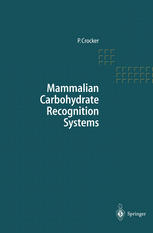

Most ebook files are in PDF format, so you can easily read them using various software such as Foxit Reader or directly on the Google Chrome browser.
Some ebook files are released by publishers in other formats such as .awz, .mobi, .epub, .fb2, etc. You may need to install specific software to read these formats on mobile/PC, such as Calibre.
Please read the tutorial at this link: https://ebookbell.com/faq
We offer FREE conversion to the popular formats you request; however, this may take some time. Therefore, right after payment, please email us, and we will try to provide the service as quickly as possible.
For some exceptional file formats or broken links (if any), please refrain from opening any disputes. Instead, email us first, and we will try to assist within a maximum of 6 hours.
EbookBell Team

4.0
86 reviewsIn the last decade there has been a great expansion in our knowledge of the existence, nature and functions of mammalian carbohydrate binding proteins. This book covers the structures and postulated functions for the major classes of mammalian carbohydrate binding proteins. These include intracellular lectins involved in diverse functions such as protein synthesis quality control, targetting of lysosomal enzymes and in the secretory pathway. In addition, several chapters are devoted to other major families of lectins that are found at the cell surface or in extracellular fluids which are involved in various recognition functions such as cell-cell interactions in inflammation and recognition of pathogen carbohydrates in host defence.